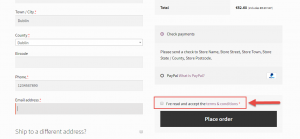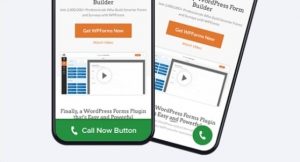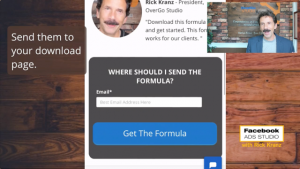
Like mobile advertising, display advertising is experiencing unprecedented growth. This year, digital display ad spending is on track to surpass search ad spend, with one in five dollars going to banners and other types of digital display ads.
As advertisers invest heavily in display ads, they want to know their efforts are paying off. A simple way to keep tabs is through conversion tracking, a useful tool that provides advertisers with valuable insight. They can see how their display ads are performing and whether they’re meeting specific objectives (e.g. sales, impressions, etc.).
However, tracking digital ad conversions can be tricky. Conversions can be influenced by a multitude of variables, and if you’re not sure what you’re looking for, it’s easy to think your campaign is doing poorly when it’s doing great (or vice versa).
Here are four questions you should ask yourself before setting up your tracking metrics.
1. Is Your Campaign Direct Response or Branded?
Display advertising campaigns fall into two categories: direct response and branded. Before you jump into conversion tracking, know which camp your display ads fall into. Why? The type of campaign will affect what you’re looking for in your conversions.
If you’re not sure, ask yourself these two questions:
- Is my focus on earning clicks, conversions, and impressions?
- Is my focus on building brand awareness?
If you answered yes to the first question, then you have a direct response campaign. If you answered yes to the latter, you have a branded campaign.
Let’s say an existing medical practice is overhauling their image. Currently, they’re running a banner ad atop a local news website. They’re not necessarily looking to bring on new patients, but more so to bring brand awareness.
Here, they’re running a branded campaign, which means they’ll be less concerned with clicks and more concerned with views. Whereas a doctor’s office looking for new patients would be concerned with clicks, form fill-outs, etc.
Which brings us to click-through and view-through conversions…
2. Does Your Campaign Need Click-Through or View-Through Conversions?
Display campaigns have two types of conversions: click-through and view-through. Depending on your needs, you may need just one, or even both if you’re running a direct response and a branded campaign.
Here’s a display ad in my Facebook news feed for Ulta Beauty. I occasionally shop at Ulta, and I own some Anastasia Beverly Hills products.
Intrigued, I click on the ‘shop now’ button. I’m now taken directly to Ulta’s website and their product page for Anastasia’s Liquid Lipstick.
Now all I have to do is pick a color, click ‘add to bag,’ and complete the shopping process. Easy peasy. In this example, I just completed a click-through conversion. A click-through conversion is recorded when a consumer views your ad, clicks on it, and converts on your website.
On the flip side, let’s say I visit a page where I see a display ad for HUM, a Verizon product. But I don’t click on it. Instead, I return to Hum’s website later to convert. This would be a view-through conversion, when a potential consumer views your ad, doesn’t click on it, but returns later to your website to convert (typically thanks to retargeting).

And if a consumer doesn’t bite, view-throughs are still good because they’re building brand awareness.
When reviewing your conversion data, remember whether you’re looking for click-throughs or view-throughs.
3. How Are Your Display Ads Being Viewed?
Advertisers love viewability, but does ad viewability always equal views? Well, not exactly. Several factors can influence how a consumer positively or negatively views a display ad, which will impact conversions. Placement, relevancy, and size all influence consumers.
Here are a few insights from one eye-tracking study done by Mediative.
Aim for Above the Fold Placement. 50% more ads were viewed above the fold compared to below the fold. And ads above the fold were viewed for 87% longer on average.
If It Isn’t Relevant Don’t Bother. Display ads were 80% more likely to be noticed by viewers if they were relevant.
Size Matters. With regards to size, Leaderboards (728×90) were seen 25% more when compared to Big Box Ads. Meanwhile Skyscrapers (300×600) were viewed 82% longer than leaderboards. And Big Box Ads (300×250) were viewed 52% longer than leaderboard ads and received the most clicks – 1.6 times more than leaderboards and 3.3 times more than skyscrapers.
If you’re experiencing poor CPM, take into consideration these factors and whether or not you need to adjust your display ad’s placement, relevancy, or size.
4. Are You Considering the Channel When Calculating CPM Rates?
Display ads are priced on a CPM (cost per thousand impressions) formula. And depending on the channel, the average CPM will vary.
For example, display ads can be served on mobile devices as well as within emails and online videos. Here, for traditional display ads (e.g. banners) the CPM average is $ 2.80.

Source: Monetize Pros
In contrast, display ads within emails can have an average CPM of $ 5. If you’re experiencing a fluctuation in CPM, it may be due to the display ad type, not necessarily anything you’re doing wrong.
Remember to optimize your display campaign for each platform (e.g. mobile, desktop). A/B testing, don’t get complacent and assume a solid CPM for mobile video ads will translate to desktop video ads.
Conclusion
Conversion tracking is helpful in keeping your campaigns on track, but only if you collect the right data. Remember conversions are impacted by many variables, so it’s important to know which variables are relevant to you, so you hone in on the right information.
By knowing the type of campaign, type of conversions, how your ads are being viewed, and the channel on which they’re being viewed, you’ll be able to pinpoint conversion metrics you need to focus on.
Digital & Social Articles on Business 2 Community(64)






